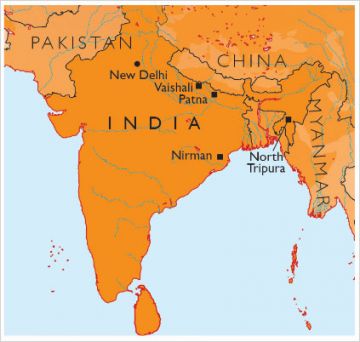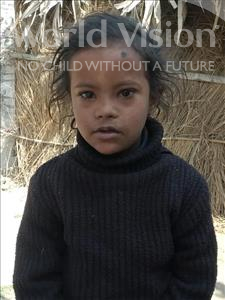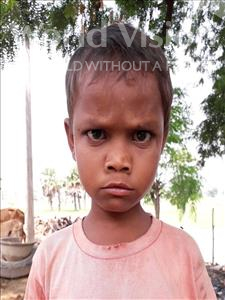Geography and people
Located in South Asia, India is bordered by Bangladesh, Bhutan, Myanmar, Nepal and Pakistan.
The landscape features an upland plateau in the south, an arid desert in the west and the Himalayan Mountains in the north.
The climate ranges from tropical to temperate. Natural resources include arable land, coal, diamonds, limestone, natural gas, titanium ore and petroleum.
As the second most populous country in the world, India supports over 15 percent of the world’s people and contains around 200 ethnic groups. Nearly 75 percent of India’s inhabitants are Indo-Aryan, a mixture of indigenous and either European or Iranian ancestry. Over 337 million people speak the national language of Hindi. Indians use English mostly in political and commercial communications.
Poverty is widespread and many children miss out on education and healthcare, including immunisations.

Population
Life expectancy
Literacy rate
Access to safe water
Average annual income
School enrollment
Fast facts
India has the world's 10th largest economy – and third largest in Asia – with a gross domestic product of over £640 billion (International Monetary Fund, 2012). Despite economic progress, the unemployment rate hovers around nine percent (CIA Factbook, 2012). Many of the poorest people are landless labourers, who struggle to find enough work to feed their families.
More than 68 percent of Indians live on less than £1 a day (World Bank, 2010). According to the World Food Programme, about 25 percent of the world's hungry live in India and around 43 percent of children under the age of five are malnourished.
Because Indians living in rural areas do not have access to adequate sanitation facilities, diarrhoea is common and is the second leading cause of death among children.
Forced labour is a significant problem in India. Millions of men, women and children are held in debt bondage and forced to work in brick kilns, rice mills, embroidery factories and other industries. Women and children are also vulnerable to human trafficking.
Please Sponsor a child in India today.
Our focus in India
World Vision is committed to partnering with the people of India to improve their lives today and to help deliver sustainable solutions for the future of their children, families and communities. Our child sponsorship programme plays a vital role in this partnership, with donors from the United Kingdom sponsoring over 8,7760 girls and boys (as of April 2014) across six community projects. In addition to sponsorship, World Vision operates other programmes that benefit communities in India.
Highlights of our work include:
Empowering young women by providing them with financial stability, economic development assistance and personal development through community projects.
Involving children in opportunities for self expression like The Child Journalists' workshop, which invites children to investigate issues, make short movies, take photos and write articles.
Protecting children's health by ensuring the immunisation of over 85 percent of children in target communities.
Working to ensure communities are confident to hold local and national government to account for delivering services in health and education.
Working to prevent child labour, return child workers to their families and school, and advocate for enforcement of existing child labour laws.
Our Achievements in India
World Vision child sponsorship programmes started in India in 1960. In addition to long-term child wellbeing advancement, other accomplishments include:
Recovery after natural disasters
Assisting Indians affected by heavy rains in 1974 and since then in major flooding disasters affecting most vulnerable districts to date including 2012 with food and shelter.
Water and health
Responding to the damage done by Pradesh cyclones and floods during the 1980s by providing clean drinking water, agricultural assistance, immunisation and nutrition programmes.
Protecting Children
Launching several projects during the 1990s to address the concerns of child labour, street children, AIDS awareness, rehabilitation of commercial sex workers and the prevention of female infanticide.
Recovery after natural disasters
Distributing food, clothes, medicines, kerosene and blankets to over 35,000 victims of the December 2004 tsunami.
Recovery after natural disasters
Providing essential food, household items, mosquito nets, cooking utensils and clothing to thousands of Indians affected by floods in 2013.
PRAY FOR INDIA

Sponsor a child in India
Latest news
-
World Vision joins DEC appeal to raise urgent funds for Indonesia tsunami survivors
Thursday 04, Oct, 2018 -
Indonesia earthquake and tsunami: World Vision UK launches appeal
Wednesday 03, Oct, 2018
Our blog
- Wednesday 10, Oct, 2018
Indonesia tsunami: Aid worker's diary of desperation and hope
Friday 05, Oct, 2018



